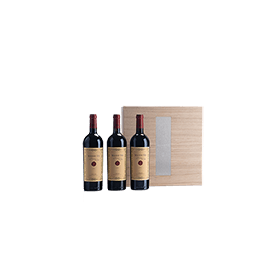Discover your 100% Free Loyalty Programme | Discover

Merlot
The first mention of the Merlot grape dates from the 18th century. The grape variety originates from a cross between Cabernet Franc (also the ancestor of Cabernet Sauvignon) and Magdeleine Noire from...Read More
Products (50)

€120.00 Incl. VAT
€20.00 / Unit
In-Stock

€120.00 Incl. VAT
€20.00 / Unit
In-Stock

€120.00 Incl. VAT
€20.00 / Unit
In-Stock
MILLESIMA PREMIUM
Rewarding you for your loyalty.





€1,320.00 Incl. VAT
€1,555.00
€220.00 / Unit
In-Stock


€1,495.00 Incl. VAT
€249.17 / Unit
In-Stock


€453.00 Incl. VAT
€75.50 / Unit
In-Stock

€365.00 Incl. VAT
€60.83 / Unit


€633.00 Incl. VAT
€675.00
€211.00 / Unit
In-Stock

€325.00 Incl. VAT
€54.17 / Unit
In-Stock

€396.00 Incl. VAT
€433.00
€66.00 / Unit

€126.00 Incl. VAT
€150.00
€21.00 / Unit
In-Stock

€147.00 Incl. VAT
€156.00
€24.50 / Unit

€420.00 Incl. VAT
€70.00 / Unit
In-Stock


€750.00 Incl. VAT
€125.00 / Unit
In-Stock

€375.00 Incl. VAT
€62.50 / Unit


€190.00 Incl. VAT
€31.67 / Unit

€342.00 Incl. VAT
€57.00 / Unit
In-Stock

€282.00 Incl. VAT
€300.00
€47.00 / Unit
In-Stock

€455.00 Incl. VAT
€75.83 / Unit
In-Stock

€23,000.00 Incl. VAT
€23,000.00 / Unit
Stock currently at the producing estate – Will ship after January 5, 2026

€92.50 Incl. VAT
€103.00
€92.50 / Unit
In-Stock

€150.00 Incl. VAT
€25.00 / Unit
In-Stock

€21.70 Incl. VAT
€21.70 / Unit
In-Stock

€756.00 Incl. VAT
€126.00 / Unit
In-Stock

€960.00 Incl. VAT
€80.00 / Unit
In-Stock

€675.00 Incl. VAT
€225.00 / Unit
In-Stock

€680.00 Incl. VAT
€113.33 / Unit
In-Stock

€65.80 Incl. VAT
€65.80 / Unit
In-Stock

€1,092.00 Incl. VAT
€364.00 / Unit
In-Stock

€744.00 Incl. VAT
€124.00 / Unit
In-Stock

€415.00 Incl. VAT
€138.33 / Unit

€159.50 Incl. VAT
€159.50 / Unit
In-Stock


€1,110.00 Incl. VAT
€370.00 / Unit
In-Stock

€460.00 Incl. VAT
€460.00 / Unit
In-Stock

€4,680.00 Incl. VAT
€1,560.00 / Unit
In-Stock
Single bottle
2023
2022
2021
2020
2019
2018
2017
2016
2015
2014
2013
2012
2011
2010
2009
2008
2007
NV
Bottle
75CLMagnum
1.5LDouble-Magnum
3LImperial
6LBalthazar
12L